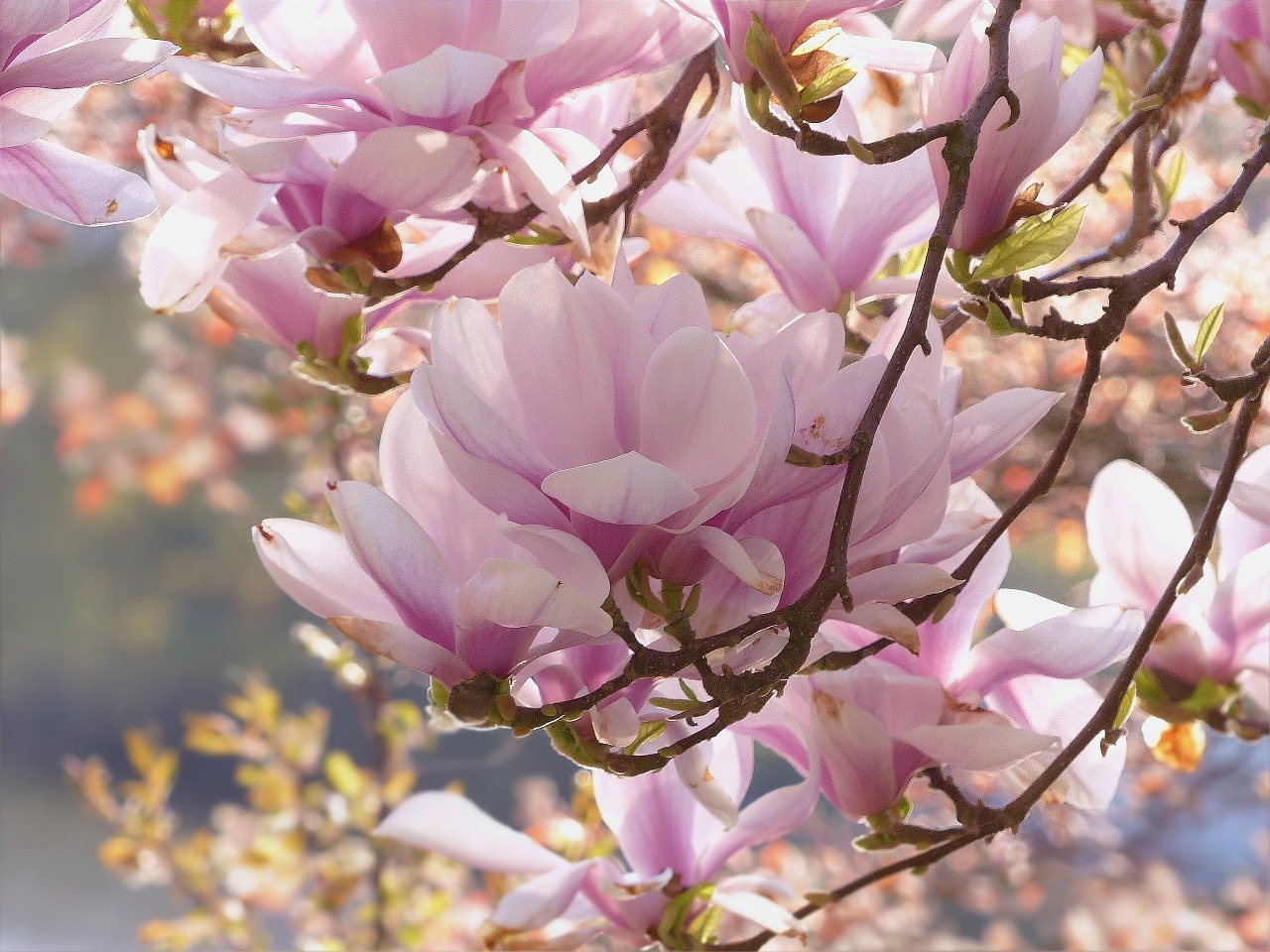
Flowering magnolia trees (Magnolia sp.) grow to 30 feet tall and have some of the most outstanding blooms in nature. There are more than 200 species of magnolia and grow typically from garden zone 6 to zone 10. Flowers can be huge, white, yellow or pink, and are often fragrant. If an early blooming cultivar, the flowers will be displayed on naked stems before the leaves of the tree appear. If later blooming, the tree will show both foliage and flower together. Most cultivars found at garden centers are hybridized species. Magnolia is a deciduous tree, but can be grown as a shrub, and its flowers are pollinated by beetles. Flowers can be forced indoors in vases once buds have formed on the limbs. Not all magnolias survive in northern climates, be sure to research cultivars which will perform better in your community and garden zone.

When, Where, and How to Plant a Magnolia
Plant magnolias in the early spring in a rich, fertile soil that is high in organic matter and well drained. Magnolias prefer bright sun and will flower less in shadier conditions. Remove all burlap, rope, and wire then water the root ball well before planting. Dig a hole the same depth of the root ball, but at least 2 times as broad when planting. Water very regularly until the tree is established. Magnolias do not handle drought well; keep consistently watered.
Magnolia Tree Growing Tips
Mulching the tree with several inches of compost out to the drip line annually will help the tree hold moisture. Do not fertilize otherwise unless the tree is showing signs of malnutrition. Pruning is not required regularly; however, if it must be done to tidy the plant, prune the trees in spring immediately after flowering.
Advice and Care for Magnolia
Overcrowding magnolias or planting them in heavy, damp shade can encourage unattractive mildew and fungal issues to develop such as wood rot, gray mold, and verticillium wilt. Plant the trees with plenty of room for air circulation. Magnolias can lose their flowers because of late frosts, so it is beneficial to plant late blooming varieties. Roots are fleshy and particularly sensitive to damage, therefore be cautious when digging around them.
When magnolia trees are not in bloom, their stalwart green background leaves act as a blending tool in the landscape. Seeds produced by the plant are enjoyed by songbirds. When they are in bloom their color and fragrance is extraordinarily captivating. With this in mind, plan bulb gardens in partnership with the magnolia’s bloom time. Yellow magnolias look fantastic with contrasting purple and yellow shaded bulbs below the tree as a colorful standout.
Download iScape now and find designs that can truly impact your living space. iScape it!






